
BY JOHN H. ROBERTS
Allows user to simulate larger listening room.
Also used by recordists and musicians for special sound effects.
THE SOUND of recorded music being played is a listening experience that changes according to the room you are in. If the room is too "live" or too "dead", the sound appears to be unnatural. When the room has an ultra-modern decor and lots of glass window areas, the effect on the music is "bouncey." With heavy drapes, carpeting, and thickly padded furniture, plus a minimum of hard surfaces, the effect approaches that of an anechoic chamber--with very little sound reflection.
For the latter, you can either throw away your sofa pillows and pull down the drapes, or you can add a time-delay device to your audio system to create a more natural ambience. Since you may not care to redecorate, you can create an echo (audio signal time delay) and reverberation (later reflections) and achieve a livelier sound.
Until recently, the only means of obtaining an audio signal delay has been through the use of very expensive electronic equipment. Now there is a new type of IC--the "bucket brigade"--and you can build your own delay system for as little as $39 in mono and $59 in stereo. Connected between source and preamp or preamp and power amplifier (at the tape monitoring jacks possibly), it provides an adjustable, signal echo that can enhance the sound in most home listening rooms. With minor connection changes, it also can be used as a phasor/flanger, giving you a sound effect for tape recording purposes and electric-guitar playing used by the professionals.
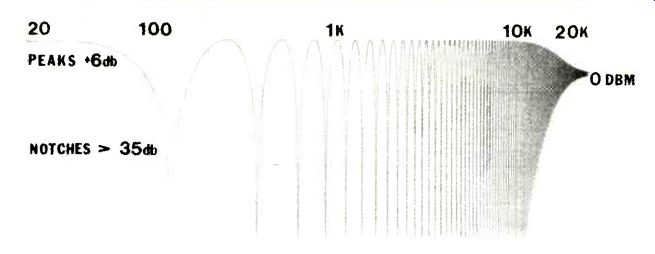
Fig. 1. Frequency between notches on a comb filter is adjusted by varying
the clock frequency.
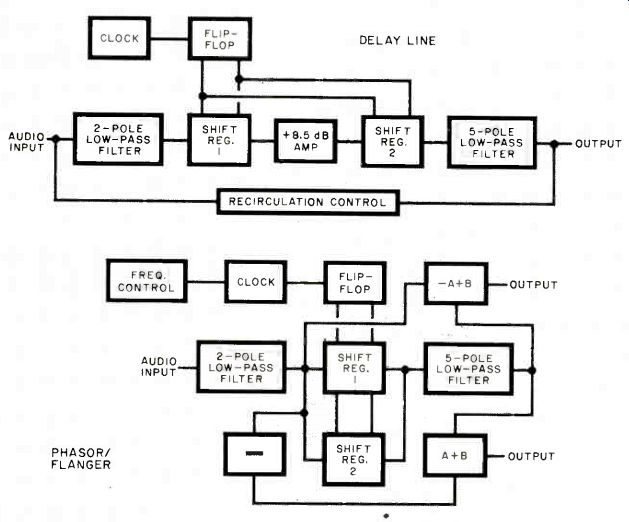
Fig. 2. Basic block diagrams of the delay line and the phasor/flanger circuits.
The bucket-brigade IC is a MOS-type shift register that contains two 512-stage registers in a single 14-pin package. When an audio signal is applied to the input of the bucket brigade and a clock generator drives the IC, the signal is stepped along stage by stage until it comes out delayed a discrete interval in time. By adding this delayed signal to the original, reverberation is simulated.
In addition to providing real-time ambience, the bucket-brigade circuit can be used with a tape recorder to provide simulated stereo sound from mono sources, a means for "double voicing," and "phasor/flanging." Technical Details. If you can delay an audio signal, you can create a number of useful sound effects. The most obvious is simulating echo, though delays provided by the bucket brigade are too short to be discerned as discrete echoes. Recirculating the delayed signal at reduced gain can approximate the natural decay of echoes in a reverberant room. By adding some gain during the recirculation of the delayed signal, you can create an unnatural "door-spring" effect on the music.
Delay an instrument or voice track by 30 or 40 ms and add the delayed signal back to the original signal, and you will make the output sound fuller and give it the effect of more than the original number of voices or instruments. This commonly used technique is known as "double voicing." Another popular short-delay effect is a strange sound that results from a technique known as "phasing" or "reel flanging." The name is derived from its original implementation where a tape recorder was used to create the time delay and the friction of a well-placed hand on the outside edge of the tape-feed reel varied the delay to produce the acoustic effect.
This effect can be created totally by electronic means by delaying the signal 0.5 to 5 ms while adding or subtracting the delayed signal from the original signal.
In the phasor/flanger mode, the frequency and its multiples whose wavelengths are equal to the time delay will be completely cancelled out while all other frequencies are reinforced. The result is a comb filter whose frequency between the notches is adjusted by varying the clock frequency (Fig. 1). In this manner, a tonal quality can be imparted to non-tonal sound such as drums, cymbals, and even voices.
The phasor/flanger mode can be used to simulate stereophonic sound from a monophonic source. To do this, the phased output derived by adding the delayed signal goes to one channel, while the output derived by subtracting the delayed signal goes to the other. To the listener, the phasing effect cancels leaving a reasonable pseudo-stereo effect.
Fig. 3. Schematic of delay line for one channel.
Resistor values for different delay configurations are given in the table below left.
TABLE OF FILTER RESITOR VALUES
PARTS LIST FOR FIG. 3 C1, C4,CIÌ-I-µF, 25-volt electrolytic capacitor The following are 5% polystyrene capacitors: C2-1300 pF C3-24 pF C5, C8-510 pF C6-43 pF C7-1200 pF C9-100 pF C10-47 pF C18--0.01-µF ceramic disc capacitor IC1,lC3-1458 dual operational amplifier 1C2-MN3001 dual analog shift register (Matsushita)
IC4-4001 CMOS quad NOR gate IC5-4013 CMOS dual D flip-flop P I-100,000-ohm potentiometer R1 through R4,R6,R9 through R16,R26See Table R5,R8-100,000-ohm, 1/4-watt, 5% resistor R7-200,000-ohm, 1/4-watt, 5% resistor Note-See Parts List for Fig. 5 for kit information.
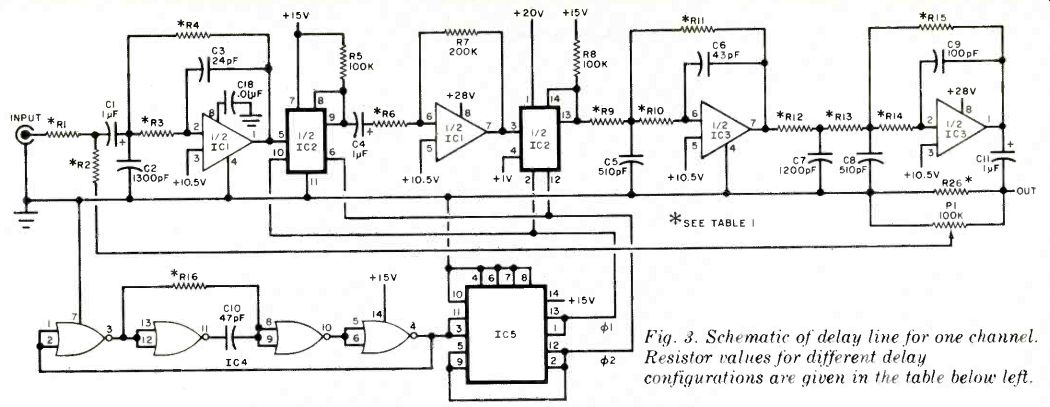
Fig. 3. Schematic of delay line for one channel. Resistor values for
different delay configurations are given in the table below left.
The basic block diagrams of the delay-line and phasor/flanger circuits are shown in Fig. 2. The hearts of the circuits, of course, are the bucket-brigade IC's, which can directly process analog signals. The circuits do not require costly analog-to-digital and digital-to-analog converters.
When the clock pulse from the flipflop is applied to the bucket-brigade IC, the dc voltage present at the input is shifted into the register. The discrete bits are transferred stage by stage with successive clock pulses until, after 256 pulses, they reach the end of the line and provide the output.
The output waveform is smoothed by a low-pass filter and duplicates whatever signal was present at the input but delayed in time by 256 times the period of the clock frequency.
(Period is equal to the reciprocal of the frequency.) For example, if the clock frequency is 100,000 Hz, the delay would be 256 x 1/100,000 = 2.56 ms.
Since the audio signal at the input is being sampled at a rate determined by the clock frequency, a theoretical limit of half the clock frequency is the highest audio frequency that can be reliably passed. However, owing to practical limitations, a third of the clock frequency is a more reasonable design goal. Circuits can be cascaded to provide longer time delays at high clock rates, but the increase in noise in the series-connected circuits might outweigh the increase in bandwidth.
In the delay mode, the two shift registers are connected in series, which allows twice the clock frequency to be used. Therefore, twice the bandwidth of a single shift register can be programmed for the same time delay.
Even in this double-bandwidth mode, the clock frequency required for a 40-ms delay limits the bandwidth to a maximum input signal frequency of 3750 Hz, which is adequate for voice but less than adequate for many musical instruments. In most applications where the delayed signal is added to the original signal, the reduction in bandwidth will be masked by the high-frequency signals present in the original. To compensate for normal signal attenuation, an 8.5-dB amplifier is used between the shift registers.
In the phasor/flanger mode, the maximum delay required is about 5 ms, which is short enough that a single shift register can be used without compromising the bandwidth. The second shift register is therefore connected in parallel with the first to improve the S/N ratio. The signals are added in-phase, while the noise adds and subtracts randomly.
========
A BUCKET-BRIGADE SHIFT-REGISTER ANALOGY
The name "bucket brigade" conjures up images of a line of men passing along buckets of water to fight a fire. The bucket-brigade analog shift register operates in a similar manner, which is how it got its name. In the case of the shift register, however, the buckets are capacitors integrated right on the PMOS chip. There are more than 1000 such capacitors on each chip (one capacitor and two MOS transistors for each stage). What is being passed along are packets of electrical charge from stage to stage.
It is difficult to pour water both into and out of a bucket at the same time. So, too, it is difficult to simultaneously charge and discharge a capacitor. This problem is overcome in the shift register by utilizing two out-of-phase clocks.
While the first clock is high, the "odd" buckets are dumped into the next consecutive "even" bucket. When the second clock is high, the even buckets are dumped into the next consecutive odd buckets. In this manner, individual charges are transferred along the line one stage at a time.
The drawing is a schematic representation of four typical stages of the MN3001 analog shift register. Each MN3001 IC contains two 512-stage shift registers. Note that stages A and C are connected to one clock, while stages B and D are connected to the other clock to provide the odd/even relationship.

============
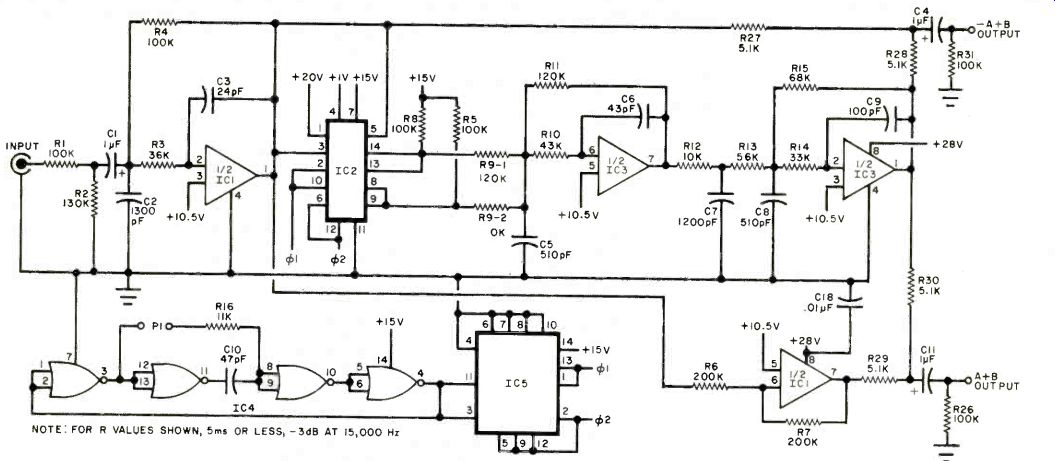
Fig. 4. Schematic of circuit .for phasor/flanger.
PARTS LIST FOR FIG. 4
C1 through C11
Same as for Fig. 3 C18-0.01-µF ceramic disc capacitor IC1 through IC5-Same as for Fig. 3 The following resistors are 1/a watt, 5% tolerance: R1, R4,R5,R8,R26,R31-100,000 ohms R2-130,000 ohms
R3-36,000 ohms R6,R7-200.000 ohms R9-1,R9-2-120,000 ohms R10-43,000 ohms R II-120,000 ohms R12-10,000 ohms R13-6,000 ohms R14-33,000 ohms R15-68,000 ohms RI6-11,000 ohms R26-100,000 ohms R27 through R30-5100 ohms Note-See Parts List for Fig. 5 for kit information.
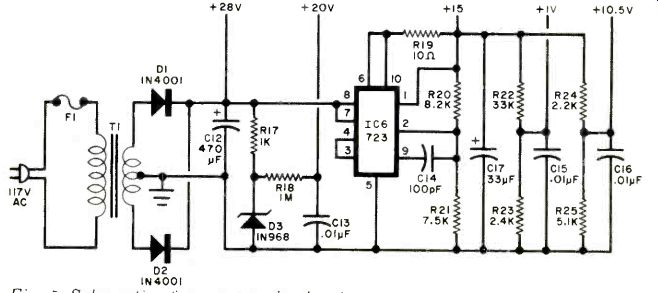
Fig. 5. Schematic of power-supply circuit. Parts List includes kit information,
for all circuits.
-------
PARTS LIST FOR FIG. 5
C12-470-µF, 35-volt electrolytic capacitor C 13,C 15,C16-0.01-uF disc capacitor C 14-100-pF disc capacitor C17-33-µF, 25-volt electrolytic capacitor DI,D2-IN4001 rectifier diode D3-1N968 (20-volt) zener diode F1-1/10-ampere fuse IC6-723 precision voltage regulator The following resistors are I/4 watt. 5/ tolerance: R17--1000 ohms R18--1 megohm R19--10 ohms R20-8200 ohms R21-7500 ohms R22-33,000 ohms R23-2400 ohms R24-2200 ohms R25-5100 ohms
T1-Power transformer with two 28-volt secondaries at 50 mA each
Misc.-Chassis; line cord; phono jacks (4); control knobs (2); rubber grommet; spacers; machine hardware, etc.
Note: The following items are available from Phoenix Systems, 375 Springhill Rd., Monroe, CT 06468:
Complete kit of parts (delay line or phasor/flanger) No. P-1220-M (mono) for $50.00; complete kit of parts No. P-1220-S (stereo) for $75.00; etched and drilled pc board No. P-1220-B for $6.00; MN3001 analog shift register IC No. P-1220-C for $20.00; transformer No. P-1220-T $5.00. For orders under $10.00, add $1.00 for shipping and handling. Connecticut residents, please add sales tax.
-----------
How It Works. The schematic diagrams of the delay-line and phasor/ flanger configurations of the circuit are shown in Fig. 3 and Fig. 4, respectively. In both cases, quad NOR gate IC4 is wired as an astable multivibrator operating at twice the desired clock rate's frequency. The output of IC4 goes to flip-flop IC5, which provides a pair of complementary (180° out of phase with each other) output clock pulses with 50% duty cycles. These pulses then "clock" the shift registers in IC2. Frequency determining resistor R16 is fixed in the delay configuration, while resistance can be added via a pair of connectors to change the clock frequency in the phasor/flanger.
The audio input signal is conditioned by seven poles of low-pass filtering in which IC3 and half of IC1 are used. The filters provide a total of 42-dB/octave attenuation above the tuning frequency. For example, if the filter were tuned for 5000 Hz, a 10,000-Hz signal would be attenuated by more than 100:1.
When filters are designed with high-gain operational amplifiers (op amps), it is possible to have their outputs increase before rolling off at the rate of 6 dB/octave per pole. Such filters are termed "under damped." By carefully selecting the proper balance of under-damped and over-damped (RC) filter sections, it is possible to design a filter that is flat in the desired passband so that it is 3 dB down at the tuning frequency and has a roll-off rate of 6 dB times the number of poles.
This is what has been done in the delay-line and phasor/flanger circuits.
Quite a bit of mathematical computation is normally required to determine the values of the filter resistors to use. To simplify matters, you can select the appropriate resistor values from the Table of Filter Resistor Values. Use this Table for selecting resistor values for only the delay-line circuit. (The filter resistor values specified in Fig. 4 and its accompanying Parts List will provide an optimized 5-ms delay, with the output 3 dB down at 15,000 Hz for the phasor/flanger.) The power supply is shown in Fig. 5.
It uses a voltage regulator, IC6, to generate the main 15-volt supply output. The shift register requires supplies of both +1 and +20 volts. The +20-volt line is obtained through the use of zener diode D3, while the +1-volt line is derived from the voltage divider consisting of R22 and R23.
Since the op amps are being operated from a single-ended supply, it is necessary to have the 10.5-volt supply line serve as the reference point in the circuit for these IC's.
=========
CLAIMED SPECIFICATIONS
Delay Line: Frequency response 15 to 15,000 Hz (+2/-3 dB)
Distortion (THD) Typically less than 1%(1000 Hz, 1 V rms)
Greater than 100,000 ohms 1.77 V rms (5 V P-P) Typically 50 dB below 0 dBm Input impedance Clipping level Signal-to-noise Phasor/Flanger: Frequency response Distortion (THD) Input impedance 15 to 15,000 Hz (+2/-3 dB) Typically less than 0.75% (1000 Hz, 1 V rms)
Greater than 100,000 ohms
==========
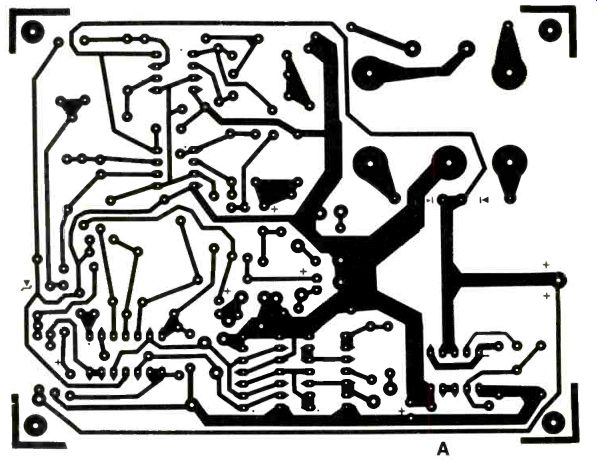
Fig. 6. Above (A) is etching and drilling guide for pc board. It can
be used for either channel for delay-line circuit, or for the phasor/flanger.
At left (B) is component layout .for one channel of delay line. It
includes the power supply. Component layouts for phasor/flanger
and second channel of stereo delay line are on next page.
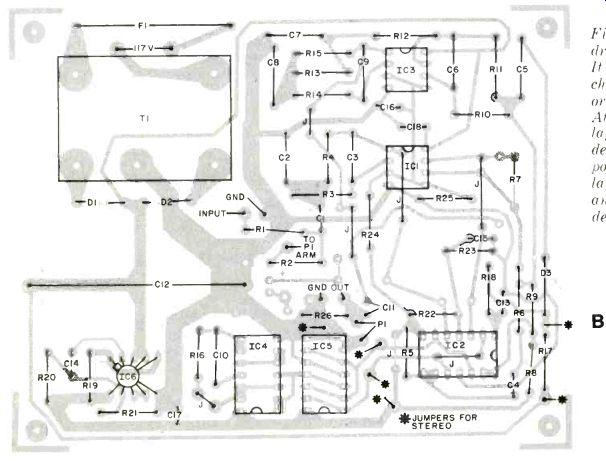
Fig. 6. Component layout at top is for phasor/flanger (C). Below (D) is
for second channel of stereo system. It uses power supply in first channel.
=========
HANDS-ON EVALUATION
Both the time-delay and phasor/flanger configurations of this circuit should keep the home recordist occupied for hours, if not days. While the effects are not as apparent as those obtained with professional delay and flanging systems, this system does not cost the $4000 or so demanded for such top-of-the-line professional system.
The flanging effect is heard only while the potentiometer is in motion, at which time the variable comb filter sweeps across the audio bandwidth to create the "flanging" sound. At rest, the comb-filtered sound is noticeable, but it is not as apparent as one would expect from looking at the peaks and dips that occur at regular intervals on the frequency response curve.
Although you might not have occasion o use the flanger as a mono-to-stereo generator, don't overlook this operating mode for the enhancement of a single-output reverberation device. Reverberation is very diffuse by nature, and the flanger outputs, when panned left and right, are a noticeable improvement--over a regular mono reverb return. When used in this application, the potentiometer remains at rest.
Use only one output when applying flanging to a recording. For an interesting Doppler effect, try combining the two outputs while rapidly revolving the pot.
Better still, replace the standard pot with free-spinning pot. (Connect the resistance element in series with R16 and the wiper to either end of the element.) On the delay line, the recirculation control must be used sparingly. A little goes a long way, and the "door spring" effect can easily get out of control. If you build both circuit configurations, you an experiment by wiring the flanger into the delay line's recirculation path.
he slight additional delay in feedback creates even more echoes at the delay line's output. It also helps to keep the door spring from becoming a steady-state squeal.
-John Woram, Woram Audio Associates
=========
Construction. The actual-size etching and drilling guide, the same for both circuit configurations but wired differently as required, is shown in Fig. 6A. The parts-placement guides for the delay-line and phasor/flanger configurations are shown in Figs. 6B and 6C, respectively.
Before installing any components on the board, mount and solder into place the wire jumpers. Then, wire the board as in Fig. 6B or Fig. 6C, depending on the desired mode of operation.
Be careful to properly orient all semiconductor devices and electrolytic capacitors. Be sure to handle the MOS devices with care to prevent them from being damaged by static charges. You can mount the IC's directly on the board or use sockets. Use a low-power soldering iron (25 to 35 watts) and fine solder, and watch out for solder bridges between the closely spaced pads on the board.
The wiring guide for the second pc board for a delay line for stereo is shown in Fig. 6D. Note that the power supply section is not repeated; you get power and clock pulses from the first board via wire interconnections.
Solder lengths of hookup wire to the pads that are to interconnect with the off-the-board pots and jacks. Then drill holes for the line cord, jacks, pots, and board mounting in a 5" x 4" x 3" (12.7 x 10.1 x 7.6 cm) aluminum chassis box. Locate the line cord and jack holes on a wall directly opposite the wall through which the pot holes have been drilled.
Use machine hardware and spacers to mount the pc board assembly to the floor of the aluminum box. If you are assembling a stereo delay line mount the second board assembly over the first with short spacers and machine hardware after interconnecting the power-supply and clock-drive lines with hookup wire. (Be sure to make the interconnections before fastening the boards together.) Connect and solder the free ends of the hookup wires from the board(s) to the appropriate lugs in the jacks and pots.
Also see:
Perf Board Wiring Techniques for Experimenters